 W
WThe Under Secretary of the Navy is the second-highest ranking civilian official in the United States Department of the Navy. The Under Secretary, called the "Under" in Pentagon slang, reports to the Secretary of the Navy (SECNAV). Before the creation of the Under Secretary's office, the second-highest civilian at the Department of the Navy was the Assistant Secretary of the Navy.
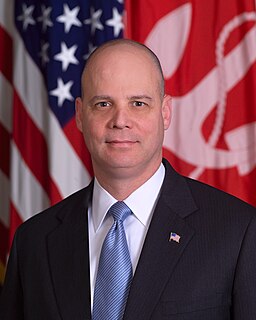 W
WDionel M. Aviles was the United States Under Secretary of the Navy from October 8, 2004 to May 19, 2009.
 W
WRalph Austin Bard was a Chicago financier who served as Assistant Secretary of the Navy, 1941–1944, and as Under Secretary, 1944–1945. He is noted for a memorandum he wrote to Secretary of War Henry L. Stimson in 1945 urging that Japan be given a warning before the use of the atomic bomb on a strategic city. He was "the only person known to have formally dissented from the use of the atomic bomb without advance warning."
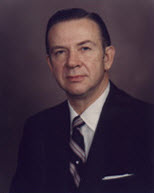 W
WKenneth E. BeLieu was the United States Assistant Secretary of the Navy 1961-65, Under Secretary of the Navy in 1965; Under Secretary of the Army 1971-73; and then director of the National Petroleum Council in the late 1970s.
 W
WRichard Jeffrey Danzig is an American politician and lawyer who served as the 71st Secretary of the Navy under President Bill Clinton. He served as an advisor of the President Barack Obama during his presidential campaign and was later the Chairman of the national security think-tank, the Center for a New American Security.
 W
WJanine Anne Davidson became president of Metropolitan State University of Denver on July 24, 2017. She served in the United States Air Force and was Under Secretary of the United States Navy from 2016 to 2017. She is the author of Lifting the Fog of Peace: How Americans Learned to Fight Modern War, a study of organizational learning and institutional change within the U.S. military. She is a national thought-leader on topics such as public service, military operations and national security policy, as well as higher education leadership.
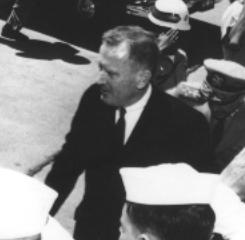 W
WPaul Burgess Fay Jr., was the Acting United States Secretary of the Navy in November 1963, and a close confidant of President John F. Kennedy.
 W
WJames Vincent Forrestal was the last Cabinet-level United States Secretary of the Navy and the first United States Secretary of Defense.
 W
WWilliam Birrell Franke was an American businessman and government official. He was best known for his service as United States Secretary of the Navy from 1959 to 1961 under Dwight D. Eisenhower.
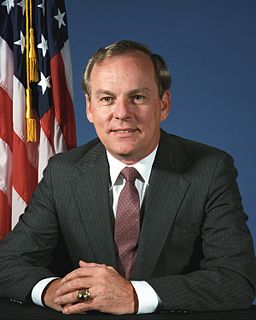 W
WHenry Lawrence Garrett III served as the 68th Secretary of the Navy from May 15, 1989, to June 26, 1992, in the administration of George H. W. Bush. Before leading the Department of the Navy, he served as General Counsel of the Department of Defense.
 W
WArtemus Lamb Gates was an American businessman, naval aviator, and Assistant Secretary of the Navy for Air in charge of naval aviation efforts in World War II. He also was briefly Undersecretary of the Navy. He was, at various times, President of New York Trust Company, and a director of Union Pacific, TIME, Boeing, Middle South Utilities, Inc., Safeway, Inc., Abercrombie & Fitch Co., and Servo Corp.
 W
WThomas Sovereign Gates Jr. was an American politician and diplomat who served as Secretary of Defense from 1959 to 1961 and Secretary of the Navy from 1957 to 1959, both under President Dwight D. Eisenhower. During his tenure as Secretary of Defense, he established a task force to set nuclear target priorities. He also authorized U-2 reconnaissance flights, including the flight of Francis Gary Powers.
 W
WThomas W. Hicks is a former acting Under Secretary of the Navy as well as Deputy Under Secretary of the Navy for Management (2013–2017). Prior to this, Hicks served as the Deputy Assistant Secretary of the Navy for Energy (2010–2013).
 W
WJ. Daniel Howard was Special Assistant to President of the United States Ronald Reagan from July 1986 to February 1988, United States Assistant Secretary of Defense for Public Affairs from February 1988 to May 1989 and Under Secretary of the Navy from 1989 to 1993.
 W
WJerry MacArthur Hultin was the United States Under Secretary of the Navy from 1997 to 2000. He was the president of the Polytechnic Institute of New York University from 2005 until 2012. He is currently the Chairman of the Global Futures Group, which advises cities, states and countries on best practices in smart city development.
 W
WWilliam John Kenney was United States Assistant Secretary of the Navy 1945-46, Under Secretary of the Navy 1947-49, and the operating chief of the Marshall Plan from 1950 to 1952..
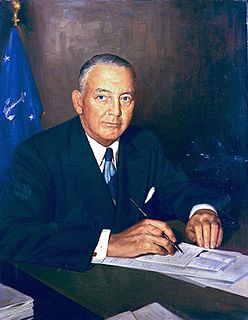 W
WDan Able Kimball was the 51st U.S. Secretary of the Navy.
 W
WSusan Morrisey Livingstone is a former Acting U.S. Secretary of the Navy in the George W. Bush administration from January-February 2003. She was the first woman to become Secretary of the Navy in U.S. history. Livingstone played a role in the effort to end coercive and abusive interrogation tactics at U.S. Naval Base Guantanamo Bay, Cuba. At the time, as Under Secretary of the Navy, Livingstone oversaw a large management portfolio, which included lawyers in the Navy General Counsel's office and investigators at the Naval Criminal Investigative Service who raised concerns about the treatment of detainees at Guantanamo Bay Naval Base.
 W
WJohn William Middendorf II is a former Republican United States diplomat and Secretary of the Navy.
 W
WThomas B. Modly is an American businessman and government official who served as acting United States Secretary of the Navy from November 24, 2019, to April 7, 2020. Modly's resignation occurred in the wake of firing and berating Brett Crozier, the captain of the aircraft carrier USS Theodore Roosevelt, for allegedly going outside his chain of command in calling for help to deal with a COVID-19 outbreak onboard. Later, Modly traveled to the ship at port in Guam, where he addressed the crew in a manner that was perceived as disrespectful. He was subsequently widely criticized, and soon resigned.
 W
WRobert B. Pirie Jr. is a retired United States Navy officer and politician. He was born in San Diego, California. Early in 2001, Pirie served as Acting Secretary of the Navy until the nomination and confirmation of an appointee by President George W. Bush.
 W
WJohn Lawrence Sullivan was an American lawyer who served in several positions in the US federal government, including as the first Secretary of the Navy during the administration of Harry S. Truman.
 W
WCharles Sparks Thomas was a U.S. administrator. He served as Secretary of the Navy between May 3, 1954 and April 1, 1957.
 W
WJohn William Warner is an American attorney and former politician who served as the United States Secretary of the Navy from 1972 to 1974 and a five-term Republican U.S. Senator from Virginia from 1979 to 2009. He currently works for the law firm of Hogan Lovells, where he had previously worked before joining the United States Department of Defense as the Under Secretary of the Navy during the presidency of Richard Nixon in 1969.
 W
WRobert James Woolsey Jr. headed the Central Intelligence Agency from February 5, 1993, until January 10, 1995. He held a variety of government positions in the 1970s and 1980s, including as United States Under Secretary of the Navy from 1977 to 1979, and was involved in treaty negotiations with the Soviet Union for five years in the 1980s. His career also included time as a professional lawyer, venture capitalist and investor in the private sector.
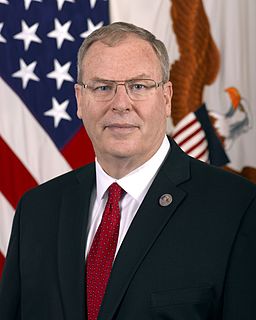 W
WRobert Orton Work is an American national security professional who served as the 32nd United States Deputy Secretary of Defense for both the Obama and Trump administrations from 2014 to 2017. Prior to that, Work was the United States Under Secretary of the Navy from 2009 to 2013, and before that served as a colonel in the United States Marine Corps; Work retired in 2001 and worked as a civilian at the Center for Strategic and Budgetary Assessments (CSBA) and the George Washington University in various positions relating to military and strategic study. From 2013 to 2014, he was the CEO of the Center for a New American Security (CNAS).